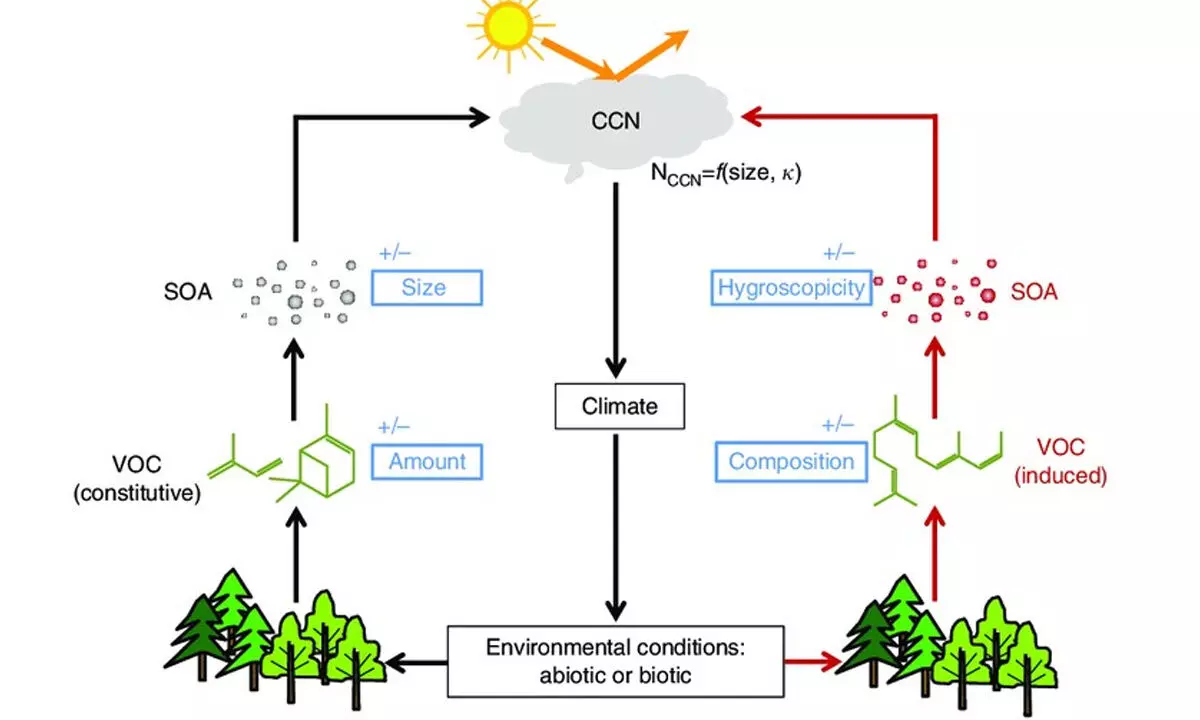IIT-M team finds how power plant emissions affects cloud formation

An international team of researchers led by those from the Indian Institute of Technology (IIT) Madras studied how atmospheric conversion of gaseous emissions from power plants into particulate matter (PM) results in particles that are rich in sulphate and consequently have high cloud forming potential compared to natural counterparts.
Chennai: An international team of researchers led by those from the Indian Institute of Technology (IIT) Madras studied how atmospheric conversion of gaseous emissions from power plants into particulate matter (PM) results in particles that are rich in sulphate and consequently have high cloud forming potential compared to natural counterparts.
The findings, published in the peer-reviewed npj Climate And Atmospheric Science, provides important scientific insights for framing the policies related to controlling the PM2.5.
The group of 27 researchers from 17 distinct institutions across eight countries delved into the impact of emissions from the Neyveli coal-fired power plant located about 200 km south of Chennai, Tamil Nadu, on aerosol growth and cloud-forming properties.
“Our study provides a rare opportunity to examine the sensitivity of cloud-forming aerosol particles to new particle formation and growth due to sulphur dioxide (SO2) emissions from a coal-fired power plant under relatively cleaner conditions," said Prof. Sachin S. Gunthe, Coordinator, Centre for Atmospheric Sciences, Department of Civil Engineering, IIT Madras, in a statement.
"These findings have important implications for assessing the climate impacts of anthropogenic aerosols and highlight the need for comprehensive emission control measures,” he added.
The study was conducted amidst the Covid-19 lockdown in India when anthropogenic emissions, such as traffic and industries, significantly decreased.
The researchers successfully demonstrated that when local sources of anthropogenic emissions stop, the SO2 emissions from power plants may amplify the mass of PM2.5 through the formation of new particles, which contradicts common assumptions.
The team found that the conversion of gaseous SO2 emissions from power plants into particulate matter contributes to an elevated mass load of aerosols rich in sulphates with high cloud-forming potential within the atmosphere.
Atmospheric aerosol particles are essential for cloud formation, ensuring the availability of freshwater to sustain life on Earth.
They also interact with incoming solar radiation, significantly impacting the planet’s radiative budget.
The study revealed a remarkable event where long-range transport of SO2 gas emitted from the Neyveli power plant resulted in new particle formation (NPF) in Chennai, generating particles generally known as ‘secondary aerosols’.
The findings demonstrated that the SO2 plume from the power plant resulted in high particulate sulphate concentrations and subsequent particle growth.
These sulphate-rich particles rapidly grew into the size relevant and required for the cloud formation exhibiting a high ability to uptake water, thus enhancing the cloud-forming potential of the aerosol particles, which is nominally not the case during usual scenarios.
The study emphasised that, therefore, under cleaner conditions with reduced human activities, the availability of low-volatility vapours of specific gases increases the chances of formation and growth of new aerosol particles, as opposed to the usual scenario where these low-volatile gases may condense on pre-existing aerosol particles resulting from human activities in an urban setup like Chennai.
“This study's outcomes imply that the existing strategies aimed at reducing PM2.5 levels from traffic and industries in India's polluted coastal clusters need thorough revaluation,” Prof. Gunthe said.














